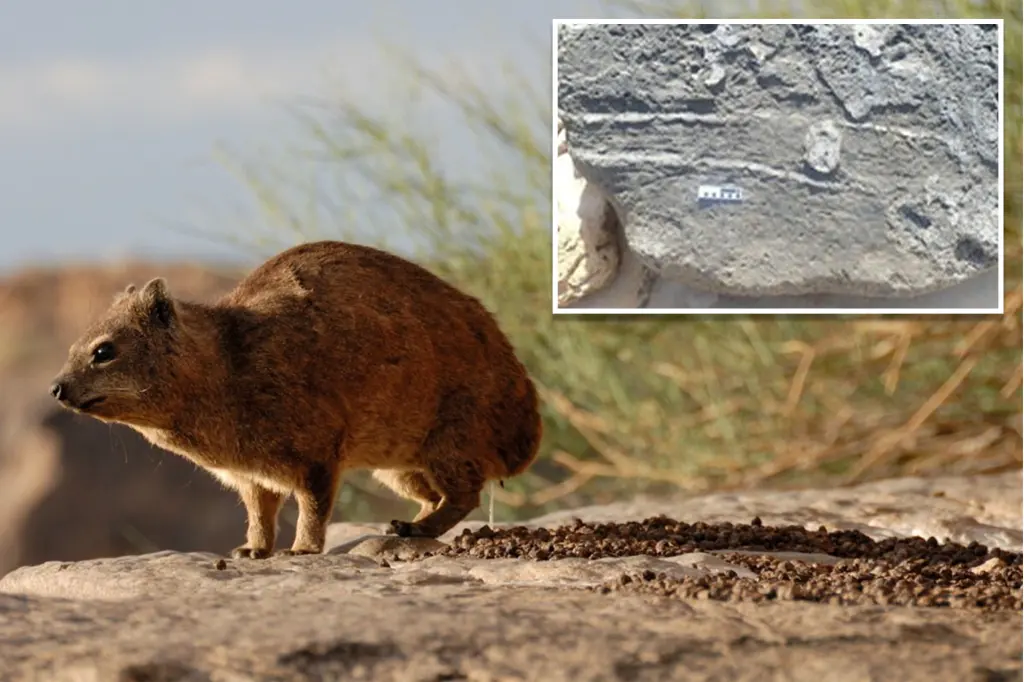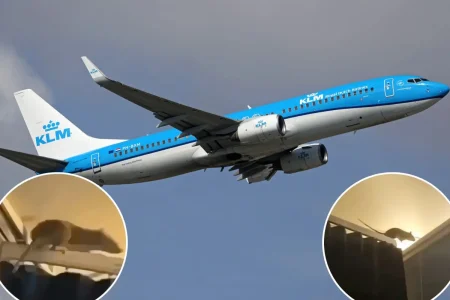Ancient Animal Behavior Fossilized in Time: The 126,000-Year-Old Butt Drag
When pet owners notice their dog scooting across the carpet, they typically rush to the vet assuming something is wrong. As it turns out, this behavior isn’t just a modern pet problem—it’s been happening for thousands of years. Paleontologists have recently uncovered remarkable evidence of a small mammal’s bathroom habits preserved in time, providing a fascinating glimpse into animal behaviors that have persisted across millennia.
The African Centre for Coastal Palaeoscience recently made headlines with their discovery of 126,000-year-old fossils depicting what appears to be a “butt-dragging” impression. The culprit? A rock hyrax—a stout, rodent-like mammal native to Africa that resembles something between a prairie dog and a guinea pig, though with distinctive vampire-like teeth. These charming creatures, commonly called dassies, are remarkable survivors that weathered the Ice Age and continue to thrive today in rocky habitats across parts of Africa. The discovery has given scientists unexpected insight into behaviors that have remained unchanged for over a hundred thousand years, connecting us to the ancient past in a surprisingly relatable way.
What makes this discovery particularly special is the remarkable detail preserved in the fossilized impression. The research team meticulously analyzed the fossil, finding it measured approximately 95 cm long and 13 cm wide with five parallel striations running throughout. A distinctive raised feature about 2 cm high was observed near the outer rim. As the scientists noted, “Clearly something was dragged across the surface when it consisted of loose sand.” The team explored several alternative explanations—perhaps a predator dragging prey, or maybe an elephant’s trunk making a scuff mark—but these theories were quickly dismissed as the evidence pointed clearly to the hyrax’s distinctive behavior. What makes the find even more significant is that it was accompanied by fossilized feces, providing additional context for understanding the ancient animal’s habits.
The connection to modern hyraxes made identification possible because these animals have maintained remarkably consistent behaviors over countless generations. Today’s rock hyraxes are highly communal creatures with the peculiar habit of using communal toilet areas, returning to the same spots to deposit urine and feces for generations. This behavior creates distinctive accumulations called middens, which can grow quite large over time. The scientists were able to match the fossil evidence with these known behavioral patterns, confirming the identity of the ancient butt-dragger. Unlike dogs who typically scoot due to anal gland issues or parasites, the exact reason hyraxes engage in this behavior remains unclear, but the evidence shows it’s been part of their behavioral repertoire for at least 126,000 years.
In paleontology, fossilized bodily excretions have their own scientific terminology—urine becomes “urolites” and dung transforms into “coprolites.” These preserved remains offer valuable insights into ancient diets, environments, and animal behaviors that wouldn’t otherwise survive in the fossil record. Because of the hyraxes’ consistent bathroom habits maintained across millennia, the researchers humorously noted that these small mammals have “contributed the lion’s share of the world’s urolite.” The accumulation of hyrax urine over time creates a substance called hyraceum, which has even been used in traditional medicine and perfumery. This finding highlights how seemingly mundane animal behaviors can leave lasting impressions that help scientists reconstruct ancient ecosystems and animal lifestyles.
“In the world of paleontology, anything this unusual is important and we feel privileged to be able to interpret them,” the research team noted in their report. Their enthusiasm is warranted—while fossils of dinosaur footprints or ancient shells are relatively common, preserved evidence of soft-tissue behaviors like butt-dragging represents an extraordinary scientific opportunity. These rare glimpses into animal behavior connect past and present, showing us that some aspects of animal life remain remarkably consistent across vast stretches of time. The team concluded their findings with a touch of humor, writing, “Through appreciating the importance of butt-drag impressions, urolites, coprolites, and hyraceum, and learning about the environment of rock hyraxes and other animals during the Pleistocene, we will never view these endearing creatures in the same light again.”
This discovery serves as a charming reminder of how paleontology can surprise us with unexpected connections to the present. When we see a modern pet scooting across the floor or watch hyraxes in a zoo, we’re witnessing behaviors with deep evolutionary roots—behaviors practiced by ancestors from a world long past. In these small, preserved moments, science reveals how the thread of life’s behaviors stretches unbroken across the vast expanses of time, making the ancient world feel just a little bit more familiar and reminding us that some things never change—even across hundreds of thousands of years.















